

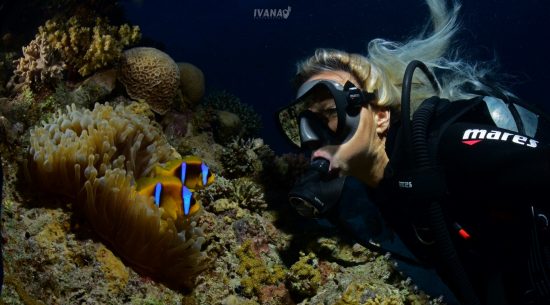
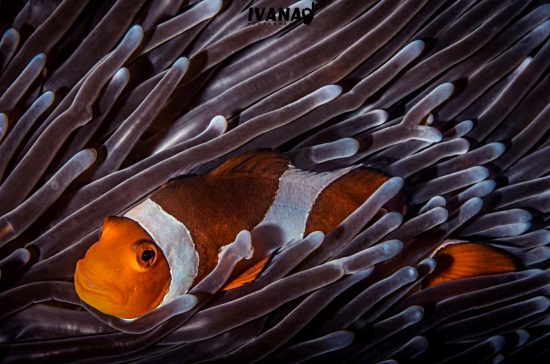
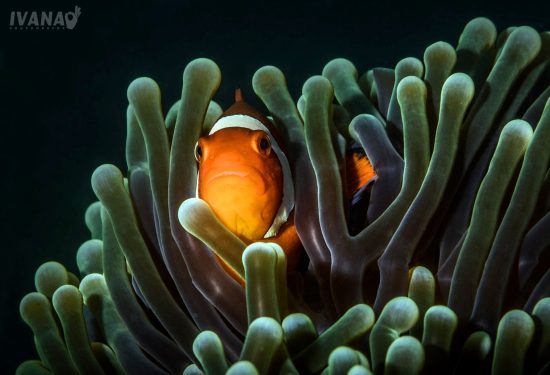
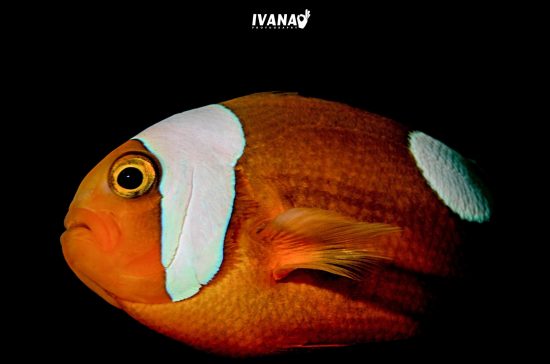
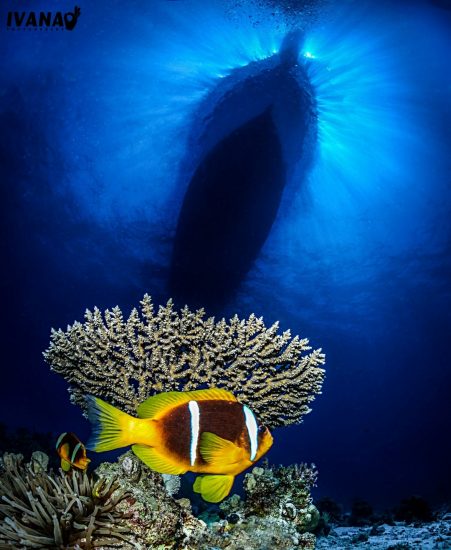
What’s the world’s most famous fish? Well, I think Clark’s anemonefish is.
What’s that you say? Remember Nemo? Well, Nemo was a false anemonefish, with the real anemonefish being a little different…
Commonly known as Clownfish, their proper name is Clark’s anemonefish. There are 28 different species of anemone fish and they come in different colours and with various stripes. They are carnivores and live for 6 - 10 years in the wild and 3 - 5 years in captivity. They grow up to 11cm with a round tail and a spiny dorsal fin. The bright orange colour of the clownfish with the three white bars gives them a very distinctive look, from above they look white.
They live in warm, tropical waters and get their name ‘anemonefish’ from their homes – anemones. The nematocysts in the anemones are usually deadly to other fish, but clownfish protect themselves from the fatal sting and make themselves at home inside and around the anemone. Their alliance with the anemone gives them a perfect fortress guarding them against other fish.
They live in perfect symbiosis with their hosts. Anemonefish can happily live in the stinging anemones and use them as a home by protecting themselves with slimy mucus. It is an arrangement which is beneficial to both sides; the fish have their home which gives them protection and food from the anemone’s leftovers, and the fish attracts food and grooms the host, cleaning it from parasites.
These homes are also living creatures, therefore an agreement needs to be made before the fish and the anemones get used to each other. Some species of anemonefish perform a dance, well sort of, before both sides get used to each other. They are very fond of their homes and don’t stray too far away from them. Don't try to approach though, these cute little fish are very protective of their anemone homes and will attack divers who come too close.
A group of up to 6 fish live in a single anemone. This group is composed of a large dominant female, a smaller dominant male and the rest of the group are believed to be juvenile male or of non-defined sex until the pair dies out. All clownfish hatch as males and change to females when required. The top “dog”, well fish in this case, is always a female, and when she dies, the most dominant male changes into a female and takes over the running of the school. While they can change from male to female, it is not possible to go back; once a female always a female.
They are quite loud and continuously communicate and keep each other in line - the importance of the sounds they make has been studied quite extensively in recent times. If you watched “Blue Planet II” you probably saw the communication required by the group to work as a team and build the perfect nest in which the female can deposit her eggs (after being courted by the dominant male who chases her and bites her until she decides he is worthy of fertilising her eggs). All this happens during a full moon.
She lays from 100-1,000 which are fertilised and then looked after mainly by the male. They hatch 6-8 days after fertilisation and transform into larvae which drift away for the following ten days when they grow and develop their colours and start looking for a permanent anemone home. Almost all eggs hatch and survive which is good news, and clownfish are not endangered at present.
There is a constant worry, however, as since the release of famous kid's movies, the sales and demand for clownfish as pets has increased so much that there is a danger of them being overfished. As they do not grow large, they seem the perfect first fish for a home aquarium and are loved by kids. I prefer to see them in their natural habitat.
By the way, just in case you take “Finding Nemo” seriously, flushing your clownfish down the toilet will not set your Nemo free, and that’s a fact!
Text by Bogna Griffin, BSc Applied Freshwater and Marine Biology, GMIT, Ireland
Photos by Ivana Orlovic Kranjc
If you're interested in learning more about sealife, why not check out the Marine Ecology program from our friends at SSI.
 Ivana and Janez
Ivana and Janez 3rd May 2018
3rd May 2018 GMIT, Galway, Irlanda
GMIT, Galway, Irlanda 